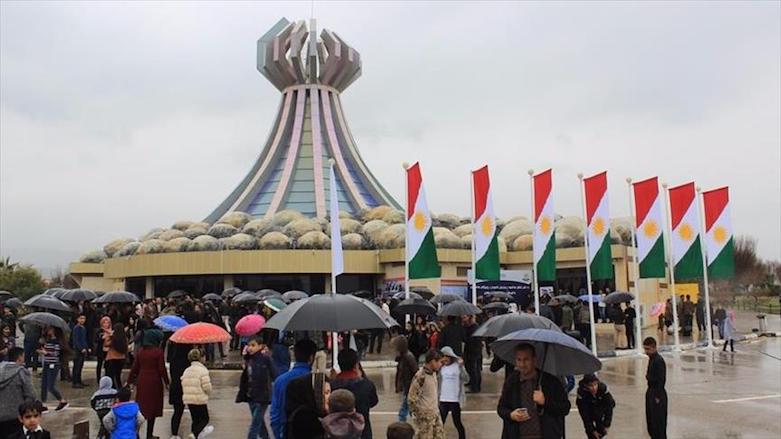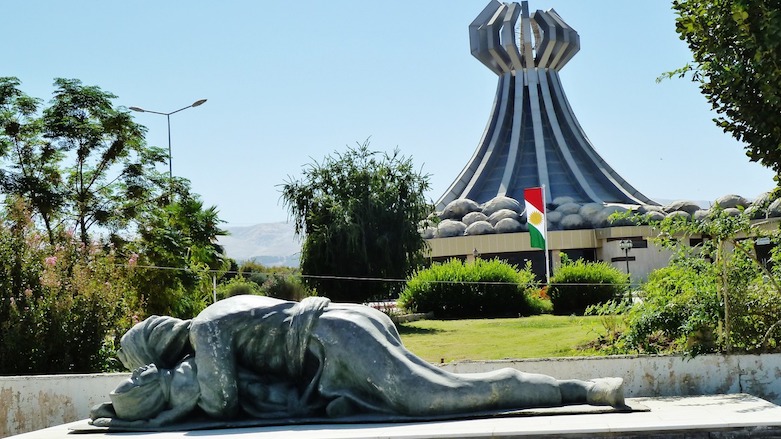Architect of The Kurdistan Museum
WASHINGTON DC (Kurdistan 24) – The world-renowned architect, Daniel Libeskind, is designing The Kurdistan Museum, in conjunction with the Kurdistan Regional Government (KRG).
The new facility will be located in Erbil, at the base of the city’s ancient citadel.
A long-time resident of New York, Libeskind is also the master planner for the reconstruction of the World Trade Center (WTC) complex, including the towers destroyed on 9/11, as well as a 9/11 museum and memorial.
Kurdistan 24 met Libeskind at the conference, “Halabja: Echoes of Genocide in Kurdistan,” which was held by the KRG in Washington on Tuesday to mark the 30th anniversary of Saddam’s Hussein’s brutal chemical attack.
The planned museum is “really the museum of the Kurdish people,” Libeskind told Kurdistan 24. It will represent the story of “their struggles and achievements,” of their history.
But, the museum “is not only about the past—the catastrophes and genocides,” he noted. “It is also about their future.”
For Libeskind, architecture “is actually a story-telling profession,” despite the fact it uses heavy materials, such as concrete and glass.
“If you could write what architecture does, you would not need buildings.”
“There are two elements which meet” in The Kurdistan Museum, Libeskind explained. “One I call the ‘Anfal Line’—a space that represents in many ways the genocide against the Kurds.”
The other line traverses that center “into a new space, which I call the line of freedom,” he said, “since the Kurds have been fighting for their freedom,” along with their nationhood and identity, “for so many generations.”
Noting that the museum will sit at the foot of the citadel, the architect observed that the new space will open “fully” toward the city, giving “the audiences a garden” that looks over the city “and really tells the story of the hope that the Kurdish people represent, not only to themselves but to the world.”
Libeskind understands architecture as a multi-dimensional, multi-sensory narrative. “It communicates with light. It communicates with acoustics, [and] it communicates with the spaces it creates,” as well as with the materials it uses.
He approached his role as the master planner for the reconstruction of New York’s World Trade Center complex in a similar fashion.
His aim was “not just to build some buildings and put a plaque” in the devastated spot, but “to create a sense of solidarity” and show the unity of a democratic people, after such a terrible event.
Plans for The Kurdistan Museum first arose a decade ago, in better times for the Kurdistan Region. Libeskind concluded his discussion with Kurdistan 24 with an appeal.
“I hope that everybody gathers” and joins “to help make this museum possible,” he said. “Of course, it depends on money, and we have to raise money,” (more can be found about The Kurdistan Museum here).
But, architecture, and museums, in particular, have a special place in the life of a people. Unlike a book, or something on the internet, “architecture cannot be erased,” Libeskind emphasized.
“That’s why the totalitarians, the violent fundamentalists, want to destroy architecture.” That is what they tried to do in Palmyra, he noted, and that’s why they destroyed the Buddhas in Afghanistan.
Erbil is one of the world’s oldest continually inhabited cities, and its citadel has been inscribed in UNESCO’s World Heritage List.
Editing by Karzan Sulaivany



